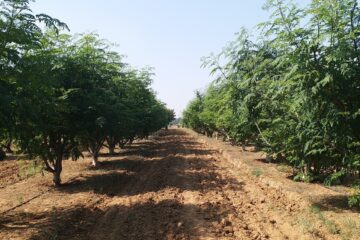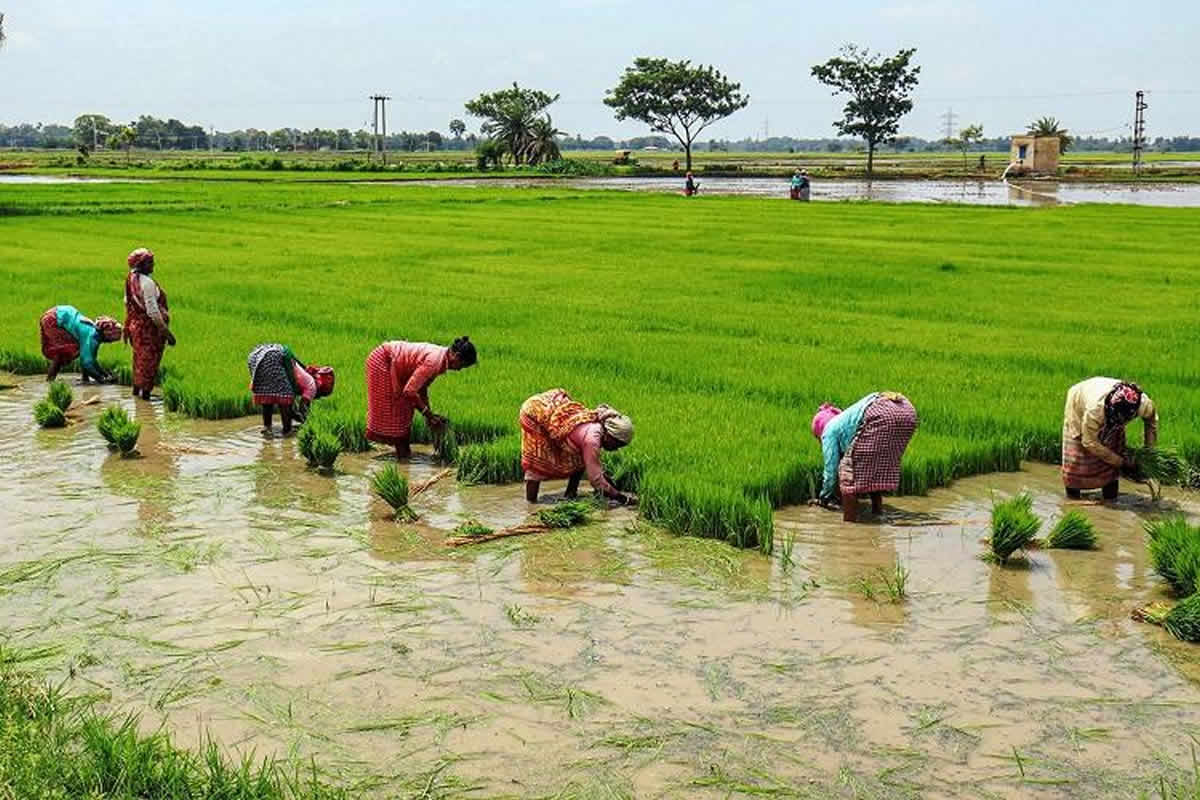Toor dal is a vital legume crop providing protein and is cultivated on a global scale over 5.62 million hectares, producing 4.23 million tons of toor dal (FAO 2019). Major producers include India (3.75 million tons), Myanmar (0.676 million tons), Malawi (0.434 million tons), Tanzania (0.315 million tons), and Haiti (0.087 million tons).
In India, Maharashtra (744,000 hectares), Karnataka (237,000 hectares), Telangana (230,000 hectares), Madhya Pradesh (151,000 hectares), and Uttar Pradesh (87,000 hectares) are the leading states cultivating toor dal, contributing to the 3.75 million tons produced annually.
Climate
In India, toor dal is cultivated in tropical and subtropical regions. It grows well during the monsoon season (June to October) with temperatures between 26°C to 30°C and post-monsoon season (November to March) with temperatures between 17°C to 28°C. Excessive rainfall and poor sunlight during flowering can adversely affect its growth.
Sowing Season
Short-duration varieties should be sown by June 15, and long-duration varieties by July 30.
Sowing Methods and Spacing
Short-duration varieties like CO(RG) 7, Vamban 1, and Vamban 3 should be sown with a spacing of 90×30 cm. Long-duration varieties like CO 6, CO 8, CO 9, Vamban 2, and LRG 41 should be sown with a spacing of 120×30 cm.
Seed Quantity
For monocropping, use 10 kg of seeds per hectare for long-duration varieties and 15 kg for short-duration varieties. For intercropping, use 5 kg for long-duration and 7 kg for short-duration varieties.
Seed Treatment
Before sowing, treat seeds with 2 grams of Thiram and 1 gram of Carbendazim or 3 grams of Thiram or 5 grams of Trichoderma viride per kilogram of seeds. After 24 hours, treat seeds with 200 grams of Rhizobium culture CBR6 or CBR9 and phosphobacteria (Bacillus megaterium) or Pseudomonas spp. for better growth.
Fertilizer Management
Apply 25 kg of nitrogen, 50 kg of phosphorus, 25 kg of potassium, and 20 kg of sulfur per hectare using 55 kg of urea, 313 kg of superphosphate, 42 kg of muriate of potash, and 154 kg of gypsum. Additionally, apply 5 kg of micronutrient mixture developed by Tamil Nadu Agricultural University (TNAU).
Water Management
Irrigate immediately after sowing, three days post-sowing, and during flowering, when 50% flowers bloom, and during pod development. Avoid water stagnation and ensure adequate moisture during flowering and pod development.
Weed Control
Hand weed on the 20th and 35th days post-sowing. Alternatively, apply 750 grams of Pendimethalin mixed in 500 liters of water on the third day post-sowing, and 60 grams of Imazethapyr in 500 liters of water on the 15th day post-sowing.
Pest Control
For pod borers such as green pod borer, spotted pod borer, plume moth, and pod fly, use 150 ml of Chlorantraniliprole 18.5% or 220 grams of Emamectin Benzoate 5% SG or 100 ml of Flubendiamide 39.35% SC or 125 ml of Spinosad 45% SC or 1250 ml of Chlorpyrifos 20 EC per hectare.
For pod sucking bugs, use 500 ml of Dimethoate 30% EC or 500 ml of Methomyl 25% EC per hectare.
Disease Control
For wilt and root rot, apply 2.5 kg of Pseudomonas spp. or Trichoderma asperellum mixed in 50 kg of farmyard manure. For sterility mosaic virus spread by mites, apply 3 grams of Wettable Sulfur 80 WP per liter of water on the 25th, 40th, and 60th days post-sowing.
Growth Promoters
Before flowering, apply 40 ml of NAA per liter of water, and after 15 days, reapply. During flowering, apply 20 grams of DAP or 30 grams of urea per liter of water, and after 15 days, reapply. Additionally, apply 100 mg of salicylic acid per liter of water before flowering and after 15 days.
Spray 0.5% zinc sulfate and 0.5% ferrous sulfate during flowering and pod formation to improve seed weight and yield.
Harvesting
Harvest when 80% of pods are mature. Stack harvested plants for a week, then thresh and dry the pods. Ensure seed moisture is 10-12%.
Yield
Using improved techniques, yields can range from 2,000 to 2,500 kg per hectare, with an additional 5-6 tons of plant biomass.
Dr. A. Gobikrishnan, Agricultural Research Station, Virinjipuram, Vellore District. Dr. T. Balaji, Agricultural College and Research Station, Vazhavachanur, Tiruvannamalai District. Dr. P. Veeramani, Tapioca and Castor Research Station, Yethapur, Salem District.










